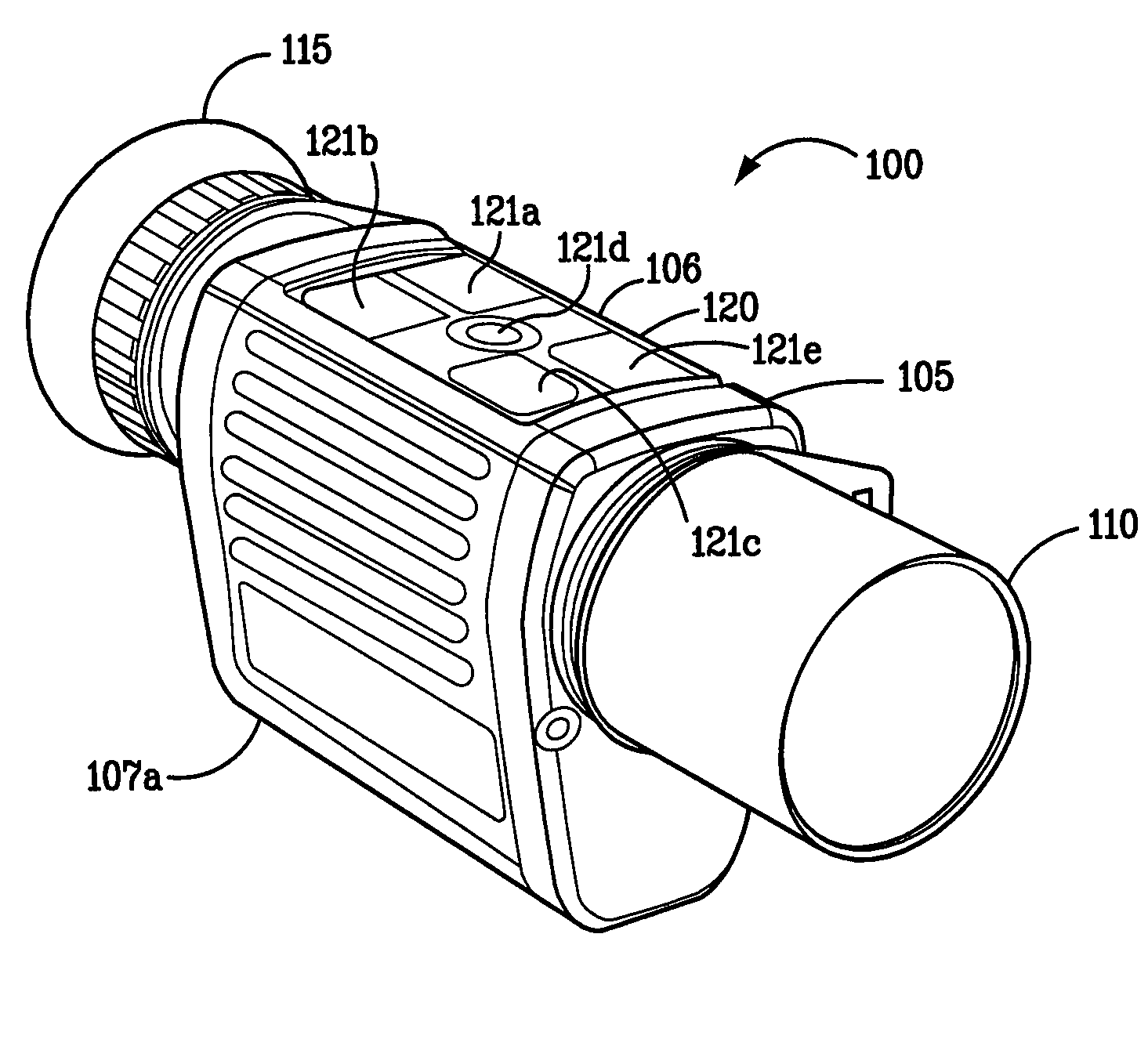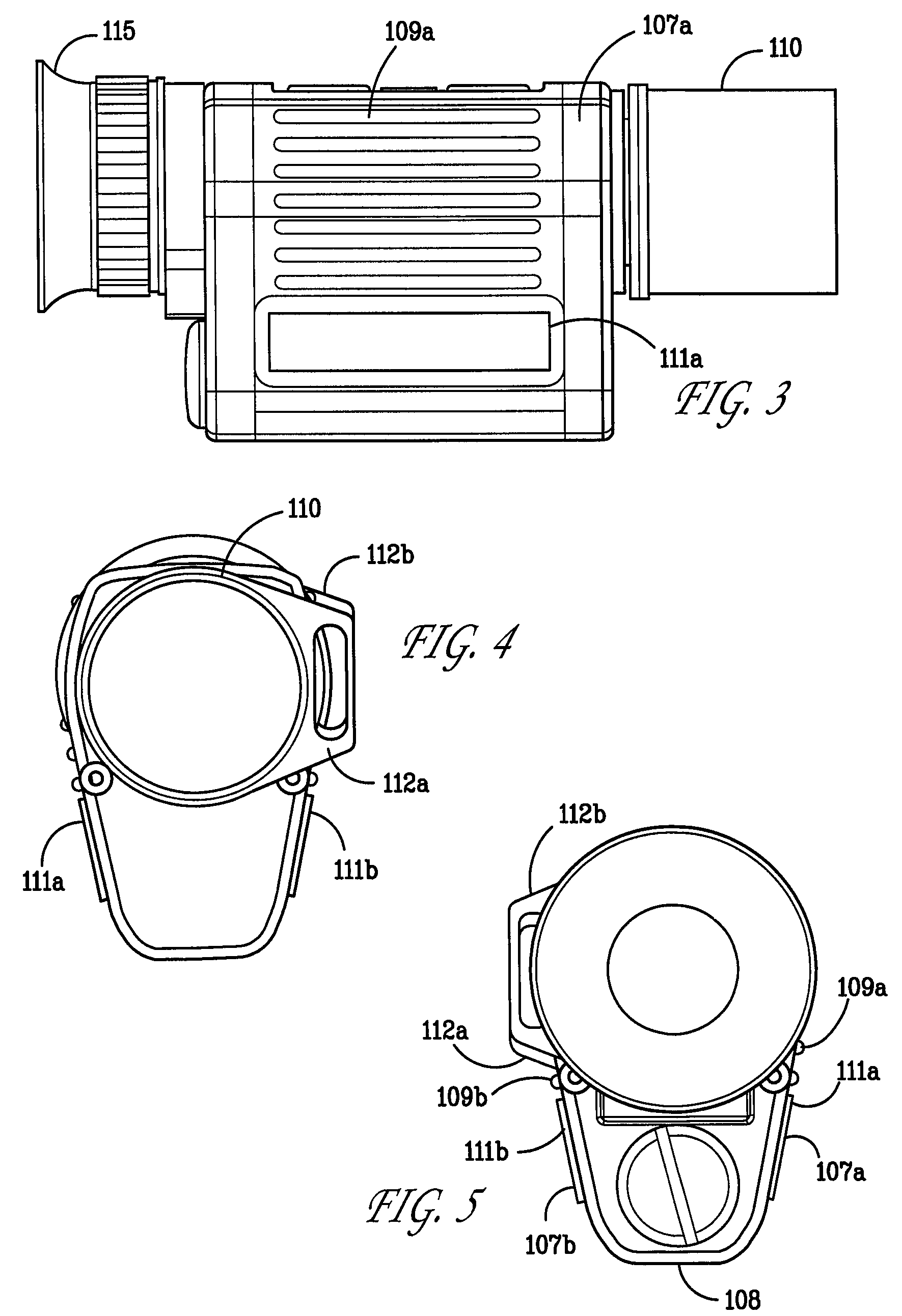Low-light viewing device for displaying image based on visible and near infrared light
a low-light viewing device and near infrared light technology, applied in the field of optical devices, can solve the problems of poor quality and/or limited user capabilities, low-light viewing devices for image intensification that are neither affordable nor easily adaptable to non-military uses, and the current generation of low-light viewing devices is not affordable and easy to adapt to non-military us
- Summary
- Abstract
- Description
- Claims
- Application Information
AI Technical Summary
Benefits of technology
Problems solved by technology
Method used
Image
Examples
Embodiment Construction
[0033]To address the problems of the prior art, an embodiment of the present invention provides a low-light viewing device capable of converting low-intensity visible light and infrared energy into a visible image. In an embodiment, the device is passive. In an embodiment, the device is ruggedized. In an embodiment, a digital low-light viewing assembly consistent with the present invention generally includes a sensitive digital camera having still / video image capture functionality, an LCD, OLED LCOS, CRT or plasma display having resolution greater than the resolution of the sensing device of the camera, a fixed focus lens with a low F-number, such as 1.0 or less, and a t-number of 1.5 or less, and control electronics as will be described in further detail below.
[0034]A disadvantage of prior art low light viewing devices is the loss of available light in lenses. For example, zoom lenses have an F number varying from about 1.6 to about 2.8 at highest magnification, resulting in loss o...
PUM
 Login to View More
Login to View More Abstract
Description
Claims
Application Information
 Login to View More
Login to View More - R&D
- Intellectual Property
- Life Sciences
- Materials
- Tech Scout
- Unparalleled Data Quality
- Higher Quality Content
- 60% Fewer Hallucinations
Browse by: Latest US Patents, China's latest patents, Technical Efficacy Thesaurus, Application Domain, Technology Topic, Popular Technical Reports.
© 2025 PatSnap. All rights reserved.Legal|Privacy policy|Modern Slavery Act Transparency Statement|Sitemap|About US| Contact US: help@patsnap.com



